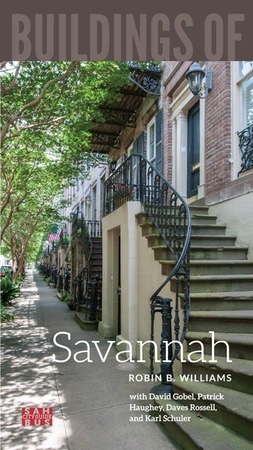
Although the congregation was organized in 1909, their church wasn’t built until 1921. The design is a late example of Gothic Revival, but reflects the more abstract sensibilities emerging in the 1920s. A pair of boldly projecting arched stone turrets dominates the front facade and guides one toward the flanking entrances on the sides. The church’s broad proportions make this a solid neighborhood anchor and, along with the Ramona Riley School (1907, Julien De Bruyn Kops; 1928 annex; 1108 E. Anderson Street), reinforced the once-dominant role of Waters Avenue as the main urban corridor in East Savannah. Faced with closure in the 1990s due to declining membership, the church revitalized its services through creative expression, which has attracted a strong revival.

